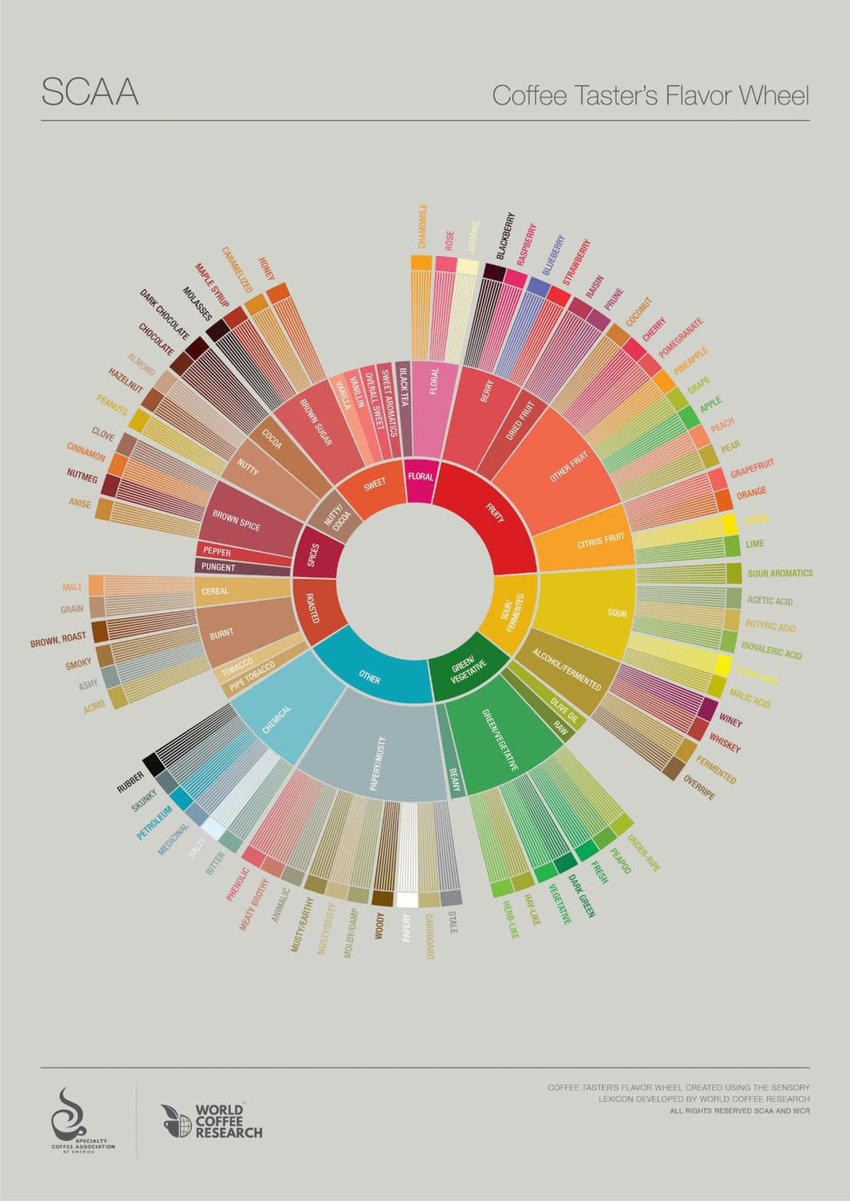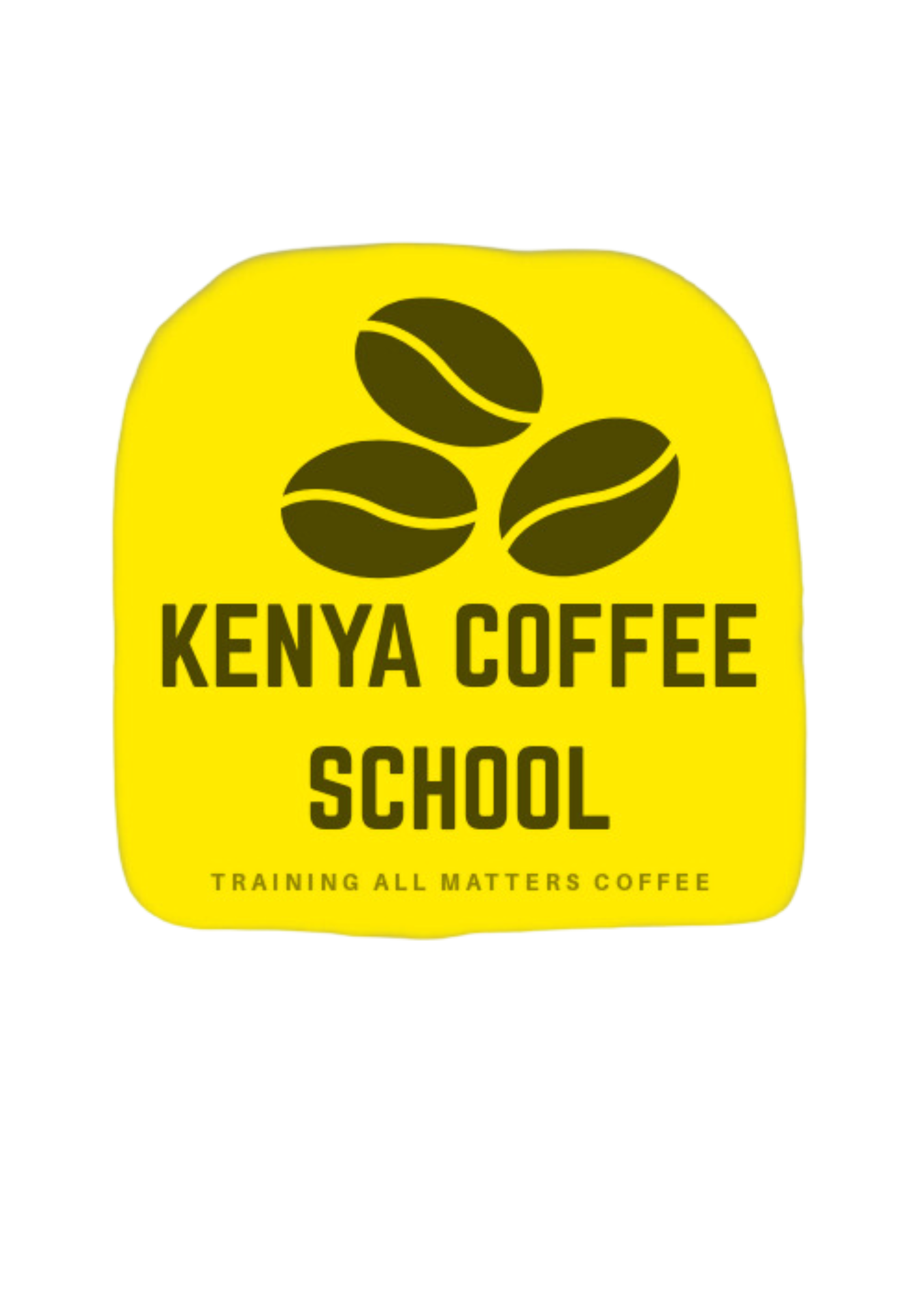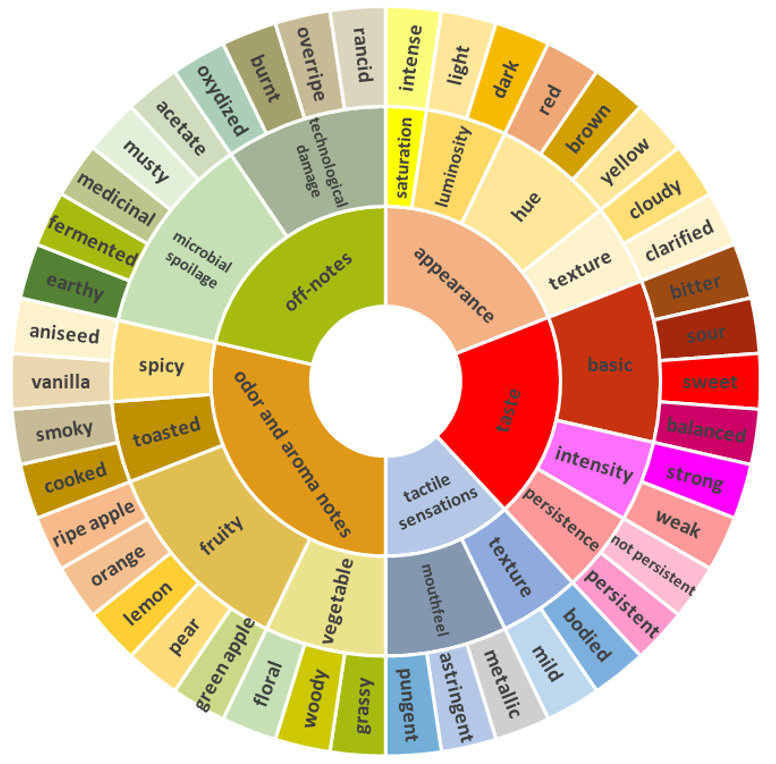KCS Coffee Sensory analysis – New KCS Cupping Protocol


A new Approach to Coffee Cupping with Minimal Potential of Biases in the sensory analysis :
Cupping, the standardized method used to evaluate coffee quality, is designed to be as objective as possible.
New Kenya Coffee School Cupping Method : Incoporative strand brew (ISB) : with a cupping method that aims at evaluating the sample solutions from all TDS angles of the cup by an adavanced human sensory analysis recognition. This Method offers even more accuracy from the preparation cupping method. The Cup that is getting evaluated should be tasted in three divisions of the solution because of density evaluation which may lead into improvement of more flavor wheel.
1.) Pre mix the cup to avoid density over brew before Slurping the Coffee.
2.) Remove all the grounds from the Cup immidiately after brew time (why if sample A has a time difference from Sample E, then bias is sample E was given more time to infuse than sample A, and that means sample E will have more development of flavour than sample A.
3.) A more controlled heating device for hot water than the kettle : We use a water heating technique where we heat the water at the same time and with the same accurate temparature control wich also remains consistent during cupping. Advantages of our sous vide technique;
a.) Precise Temperature Control: Sous vide allows you to set and maintain an exact water temperature, which is crucial for coffee cupping. The Specialty Coffee Association (SCA) recommends a water temperature of 200°F (93°C) for cupping coupled with observations on the TDS meters as the flavor develops, color refractometer etc
b.) Consistency: Sous vide ensures the water stays at the desired temperature throughout the session, providing consistent results.
c.) Hands-Off: Once set, the sous vide machine requires minimal supervision, freeing you to focus on the cupping process. Removing the Coffee grounds with spoons is time wasting and leaves some grounds floating Kenya Coffee School encourages this to be dome with stainless steel hop-over sieves which offers a quick and efficient separations for efficient slurping, it also uses surface pressure to create insert air inside the lower sections of the cup that effectively pulls water from the lower to the upper section of the cup hence increasing more air on the coffee to be slurped.

4.) Kenya Coffee School Cupping Research : Cupping is supposed to be evaluated on the basis of understanding more sensory analysis sciences;
The anatomical units of taste detection are taste receptor cells (TRCs) that are assembled into taste buds distributed across different papillae of the tongue and palate epithelium.Heterotrimeric G protein-coupled receptors (GPCRs) comprise the largest receptor family in mammals and are responsible for the regulation of most physiological functions. Besides mediating the sensory modalities of olfaction and vision, GPCRs also transduce signals for three basic taste qualities of sweet, umami (savory taste), and bitter, as well as the flavor sensation kokumi. Taste GPCRs reside in specialised taste receptor cells (TRCs) within taste buds. Type I taste GPCRs (TAS1R) form heterodimeric complexes that function as sweet (TAS1R2/TAS1R3) or umami (TAS1R1/TAS1R3) taste receptors, whereas Type II are monomeric bitter taste receptors or kokumi/calcium-sensing receptors. Sweet, umami and kokumi receptors share structural similarities in containing multiple agonist binding sites with pronounced selectivity while most bitter receptors contain a single binding site that is broadly tuned to a diverse array of bitter ligands in a non-selective manner. Tastant binding to the receptor activates downstream secondary messenger pathways leading to depolarization and increased intracellular calcium in TRCs, that in turn innervate the gustatory cortex in the brain. Despite recent advances in our understanding of the relationship between agonist binding and the conformational changes required for receptor activation, several major challenges and questions remain in taste GPCR biology that are discussed in the present review. In recent years, intensive integrative approaches combining heterologous expression, mutagenesis and homology modeling have together provided insight regarding agonist binding site locations and molecular mechanisms of orthosteric and allosteric modulation. In addition, studies based on transgenic mice, utilizing either global or conditional knock out strategies have provided insights to taste receptor signal transduction mechanisms and their roles in physiology. However, the need for more functional studies in a physiological context is apparent and would be enhanced by a crystallized structure of taste receptors for a more complete picture of their pharmacological mechanisms.
5.) Biased View of compare and contrast of the 2 cupping protocols – why most of people globally take most of the espresso based drinks more than brewed pour over coffees. We need to develop a more precise guideline on the espresso cupping and a standardized approach.
| Aspect | Brew Cupping | Espresso Cupping |
|---|---|---|
| Flavor Profile | Broader, more nuanced – Subjective | Intense, concentrated – Subjective |
| Purpose | General coffee evaluation | Espresso-specific evaluation – Biased |
| Standardization | Highly standardized (SCA protocols) | Less standardized – Biased |
| Brewing Variables | Minimal (water, grind, time) – Biased | High (pressure, grind, dose, yield) |
| Defect Detection | Excellent – Biased | Less effective – Biased |
Traditional/Current Cupping :
However, like any sensory evaluation method, it can still be subject to bias. Here’s a breakdown of the potential biases in cupping and how they can be mitigated: How we taste flavour is subjective to many determinants
Potential Biases in Cupping
- Personal Preferences:
- Taste Preferences: Cuppers may have personal preferences for certain flavor profiles (e.g., fruity vs. nutty), which can influence their scoring.
- Cultural Bias: Cultural backgrounds can shape perceptions of what is considered “good” or “bad” coffee.
- Environmental Factors:
- Setting: The environment where cupping takes place (e.g., lighting, noise, or distractions) can affect a cupper’s focus and judgment.
- Sample Order: The order in which samples are tasted can lead to palate fatigue or carryover flavors, skewing results.
- Psychological Biases:
- Expectation Bias: Knowing the origin, processing method, or producer of a coffee can influence a cupper’s expectations and scoring.
- Anchoring Bias: The first coffee tasted can set a reference point, affecting how subsequent coffees are evaluated.
- Physical Factors:
- Palate Fatigue: Tasting multiple coffees in a row can dull the senses, making it harder to detect subtle flavors in later samples.
- Health and Mood: A cupper’s physical health, stress levels, or mood can impact their ability to evaluate coffee objectively.
- Training and Experience:
- Skill Level: Less experienced cuppers may struggle to identify and score flavors accurately, leading to inconsistent results.
- Calibration: Without proper calibration among cuppers, scores can vary widely even among professionals.
- Sample Preparation:
- Inconsistent Brewing: Variations in grind size, water temperature, or steeping time can affect the extraction and flavor of the coffee.
- Contamination: Residual flavors from improperly cleaned equipment can alter the taste of subsequent samples.
How to Mitigate Bias in Cupping
- Blind Cupping:
- Remove all identifying information about the coffee (origin, producer, processing method) to prevent expectation bias.
- Standardized Protocols:
- Follow strict guidelines for sample preparation, water temperature, grind size, and steeping time to ensure consistency.
- Use the Specialty Coffee Association (SCA) cupping form and protocols for uniformity.
- Calibration:
- Regularly calibrate with other cuppers to ensure consistency in scoring and flavor identification.
- Use reference samples to train and align sensory perceptions.
- Controlled Environment:
- Conduct cupping in a quiet, well-lit, and neutral-smelling environment to minimize distractions.
- Use proper ventilation to prevent aroma buildup.
- Randomized Order:
- Randomize the order of samples to avoid palate fatigue or anchoring bias.
- Include palate cleansers (e.g., water, plain crackers) between samples.
- Multiple Cuppers:
- Use a panel of cuppers to average out individual biases and ensure more reliable results.
- Discard outliers in scoring to focus on consensus.
- Training and Experience:
- Invest in ongoing training for cuppers to improve their sensory skills and consistency.
- Encourage cuppers to reflect on their personal biases and work to minimize them.
- Physical and Mental Preparedness:
- Ensure cuppers are well-rested, hydrated, and free from illness or stress.
- Avoid cupping immediately after eating strongly flavored foods.
Is Cupping Still Effective Despite Bias?
While cupping is not entirely free from bias, it remains one of the most effective and widely accepted methods for evaluating coffee quality. Its standardized protocols and focus on sensory analysis make it a valuable tool for:
- Grading and scoring coffee.
- Identifying defects.
- Comparing different coffees.
- Providing feedback to producers.
Types of Cupping :
1. Traditional Brew Cupping (SCA Standard)
- Purpose: To evaluate the overall quality, flavor profile, and defects of coffee.
- Process:
- Use a specific coffee-to-water ratio (e.g., 8.25 grams of coffee to 150 ml of water).
- Grind coffee to a medium consistency (similar to table salt).
- Pour water at 200°F (93°C) and steep for 4 minutes.
- Break the crust, skim the grounds, and taste.
- Key Features:
- Standardized for consistency.
- Focuses on aroma, flavor, acidity, body, aftertaste, and balance.
- Ideal for green coffee buyers, roasters, and quality control.
2. Espresso Cupping
- Purpose: To evaluate how a coffee performs specifically as an espresso.
- Process:
- Pull a shot of espresso using a standardized recipe (e.g., 18 grams in, 36 grams out, in 25–30 seconds).
- Taste the espresso directly, evaluating crema, body, balance, and flavor intensity.
- Key Features:
- Focuses on espresso-specific attributes like extraction, texture, and concentration.
- Useful for baristas and roasters developing espresso blends.
3. Comparative Cupping
- Purpose: To compare multiple coffees side by side.
- Process:
- Cup several coffees simultaneously using the same brewing parameters.
- Evaluate differences in flavor, aroma, acidity, body, and aftertaste.
- Key Features:
- Helps identify preferences, quality differences, or roast variations.
- Commonly used in competitions, sourcing, and product development.
4. Blind Cupping
- Purpose: To eliminate bias and evaluate coffee objectively.
- Process:
- Cup coffees without knowing their origin, roast level, or other details.
- Focus solely on sensory evaluation.
- Key Features:
- Ensures impartial judgment.
- Often used in competitions, quality control, and training.
5. Cold Brew Cupping
- Purpose: To evaluate how a coffee performs as a cold brew.
- Process:
- Steep coffee in cold or room-temperature water for an extended period (12–24 hours).
- Strain and taste, focusing on flavor clarity, sweetness, and balance.
- Key Features:
- Highlights low-acidity, smooth, and sweet characteristics.
- Useful for cafes or roasters specializing in cold brew.
6. Roast Level Cupping
- Purpose: To evaluate how different roast levels affect a coffee’s flavor profile.
- Process:
- Cup the same coffee roasted to different levels (light, medium, dark).
- Compare differences in acidity, body, and flavor development.
- Key Features:
- Helps roasters understand how roast impacts flavor.
- Useful for developing roast profiles.
7. Single-Origin vs. Blend Cupping
- Purpose: To compare single-origin coffees with blends.
- Process:
- Cup single-origin coffees and blends side by side.
- Evaluate complexity, balance, and uniqueness.
- Key Features:
- Highlights the distinct characteristics of single-origins versus the harmony of blends.
- Useful for roasters developing new products.
8. Defect Cupping
- Purpose: To identify and evaluate defects in coffee.
- Process:
- Cup coffees intentionally containing defects (e.g., sour, fermented, or musty beans).
- Compare with defect-free samples.
- Key Features:
- Trains cuppers to recognize and score defects.
- Essential for green coffee buyers and quality control.
9. Consumer-Style Cupping
- Purpose: To simulate how a consumer might experience the coffee.
- Process:
- Use simpler, less standardized methods (e.g., French press or pour-over).
- Focus on overall enjoyment rather than technical evaluation.
- Key Features:
- More accessible for casual coffee drinkers or educational events.
- Less formal than SCA cupping.
10. Regional or Origin-Specific Cupping
- Purpose: To explore the unique characteristics of coffees from specific regions.
- Process:
- Cup coffees from the same region or country side by side.
- Identify common flavor profiles or terroir influences.
- Key Features:
- Highlights regional differences (e.g., Ethiopian florals vs. Colombian nuttiness).
- Great for educational purposes or marketing.
Home Cupping Video :
By acknowledging and addressing potential biases, cuppers can improve the accuracy and reliability of their evaluations, ensuring that cupping remains a cornerstone of the specialty coffee industry.
Different types of Slurping :
1. The Standard Slurp
- How to Do It:
- Take a spoonful of coffee.
- Quickly inhale while sipping the coffee, creating a slurping sound.
- Allow the coffee to spread across your entire palate.
- Purpose:
- Maximizes aeration to release volatile aromas.
- Helps assess flavor, acidity, and aftertaste.
2. The Gentle Slurp
- How to Do It:
- Take a smaller amount of coffee on the spoon.
- Slurp gently, with less force than the standard slurp.
- Purpose:
- Useful for very hot or intense coffees.
- Reduces the risk of overwhelming your palate.
3. The Layered Slurp
- How to Do It:
- Take a spoonful of coffee.
- Slurp in stages, allowing the coffee to coat different parts of your mouth (front, middle, back).
- Purpose:
- Helps identify how flavors evolve on the palate.
- Useful for detecting complexity and balance.
4. The Quick Slurp
- How to Do It:
- Take a small amount of coffee.
- Slurp quickly and sharply.
- Purpose:
- Focuses on immediate flavor impressions.
- Useful for rapid evaluations or when cupping many samples.
5. The Slow Slurp
- How to Do It:
- Take a spoonful of coffee.
- Slurp slowly, allowing the coffee to linger on your palate.
- Purpose:
- Enhances the perception of body and texture.
- Helps identify lingering aftertastes.
6. The Spritz Slurp
- How to Do It:
- Take a small amount of coffee.
- Slurp with a quick, spritzing motion, almost like spraying the coffee in your mouth.
- Purpose:
- Maximizes aeration for highly aromatic coffees.
- Useful for detecting subtle floral or fruity notes.
7. The Retro-Nasal Slurp
- How to Do It:
- Take a spoonful of coffee.
- Slurp while focusing on exhaling through your nose after swallowing.
- Purpose:
- Enhances the perception of aromas through retro-nasal olfaction.
- Helps identify complex aromatic notes.
8. The Comparative Slurp
- How to Do It:
- Slurp two or more coffees in quick succession.
- Compare the flavors, acidity, and body side by side.
- Purpose:
- Highlights differences between coffees.
- Useful for comparative cupping or blend development.
Tips for Effective Slurping:
- Practice Control: Avoid slurping too forcefully, as it can overwhelm your palate or cause discomfort.
- Aerate Properly: The goal is to mix the coffee with air to release aromas, so focus on creating a fine mist in your mouth.
- Clean Your Spoon: Rinse your spoon between samples to avoid cross-contamination.
- Take Notes: Record your impressions immediately after slurping to capture the most accurate flavor profile.
- Stay Consistent: Use the same slurping technique for all samples in a session to ensure fair comparisons.
Why Slurping Matters:
- Aeration: Slurping introduces air into the coffee, releasing volatile aromatic compounds.
- Palate Coverage: It spreads the coffee across your entire palate, allowing you to detect sweetness, acidity, bitterness, and body.
- Flavor Clarity: The technique enhances your ability to identify subtle flavors and nuances.



